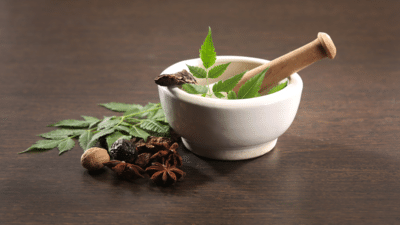One of the greatest botanical endeavors of the modern era, the World Herbal Encyclopedia (WHE) is a gargantuan 109-volume work uniting traditional plant wisdom and modern scientific understanding. Written by Acharya Balkrishna alone—co-founder of Patanjali Ayurved—the book covers an incredible 120,418 pages and documents close to 50,000 medicinal plant species from across the globe. Although only 20 complete sets have been sent out so far, the encyclopedia is already receiving notice from botanists, medical historians, researchers, herbalists, and conservationists from all walks of life.
A one-of-a-kind botanical record

Fundamentally, WHE is a worldwide catalog of medicinal plants that categorizes in excess of 7,500 plant genera in accordance with data derived from well over 600,000 sources. These range from fieldwork, ancient texts, peer-reviewed papers, unusual books, and oral traditions of more than 2,000 tribal groups.
What distinguishes the encyclopedia is not just its scale, but also its cultural diversity. It documents over 1.2 million vernacular plant names across more than 2,000 languages and dialects, and catalogs 250,000 botanical synonyms, providing an unmatched linguistic and ethnobotanical bridge.
Visual depth
The WHE contains more than 35,000 precise botanical line drawings and 30,500 hand-painted canvas paintings. These pictures illustrate the plant morphology—leaves, stem, flowers, and roots—to ensure proper identification and cross-cultural comprehension. The combination of both scientific drawing and indigenous artwork portrays the double target audiences of the book: contemporary scientists and traditional practitioners.
Ethnobotanical Heritage and indigenous wisdom
WHE extends far beyond taxonomy. It encodes the living traditions of over 2,000 indigenous and tribal communities, their plant-based practices, healing rituals, and spiritual associations. Over 2,200 traditional remedies and 900 different healing practices are documented—many of which are threatened with loss in the context of globalization and ecological shift.
Rather than offering new medicinal claims, the encyclopedia curates existing knowledge systems and phytochemical profiles, presenting therapeutic uses as recorded in historical and traditional contexts.
Powered by Patanjali’s great wisdom

The development of the WHE goes hand-in-hand with the overall mission of Patanjali Ayurved , the Indian business founded by Acharya Balkrishna. Patanjali, which has popularized and revitalized Ayurveda, has also spent millions on research, conservation, and documentation of traditional knowledge. The encyclopedia is an expression of this mission: preserving ancient knowledge and bringing it to the contemporary world.
By its research bases and ethnobotanical researches, Patanjali has facilitated field data compilation, manuscript collection, and linguistic mapping exercises that form the basis for much of the contents of the encyclopedia.
Available digitally on the WHE portal
In addition to extending access from the print sets, a digital platform—the WHE Portal—has been created. Through the portal, students, scholars, and practitioners can browse through information based on more than six lakh (600,000) sources ranging from classical texts to scientific articles and field reports. Though access is controlled by platform terms, the portal is meant as an academic and cultural resource.
Acharya Balkrishna's status as the sole author of such a monumental corpus puts him in a rare category of free scholar-compilers. Distinguished for his work on Ayurveda and traditional health systems, Balkrishna's ambition is to conserve not substitute, humanity's aggregated plant knowledge.
His Patanjali leadership has assisted in allowing the infrastructure, fieldwork, and scholarly concentration required by a project of such enormity. Nevertheless, the encyclopedia itself is a work of scholarship, based in cross-disciplinary strength and cultural respect.
A multilingual bridge
WHE's linguistic design is yet another of its highlights. Plant names are entered in several languages and scripts, including transliterations and phonetic spellings. Scientific names are precisely cross-matched to regional and local usages, providing a treasured resource for researchers operating across languages and cultures.
The World Herbal Encyclopedia enters a crowded field of local herbals, pharmacopoeias, and flora indexes, but outdoes them both in scale and vision. By collecting centuries of knowledge on one platform, and by connecting it to a contemporary institutional framework such as Patanjali, it aims to preserve the world's herbal heritage for posterity.
Through its assembly into one single, available piece of work, Acharya Balkrishna has done something that has never been done before: charting the world map of healing, tradition, and biological diversity.
A one-of-a-kind botanical record
Fundamentally, WHE is a worldwide catalog of medicinal plants that categorizes in excess of 7,500 plant genera in accordance with data derived from well over 600,000 sources. These range from fieldwork, ancient texts, peer-reviewed papers, unusual books, and oral traditions of more than 2,000 tribal groups.
What distinguishes the encyclopedia is not just its scale, but also its cultural diversity. It documents over 1.2 million vernacular plant names across more than 2,000 languages and dialects, and catalogs 250,000 botanical synonyms, providing an unmatched linguistic and ethnobotanical bridge.
Visual depth
The WHE contains more than 35,000 precise botanical line drawings and 30,500 hand-painted canvas paintings. These pictures illustrate the plant morphology—leaves, stem, flowers, and roots—to ensure proper identification and cross-cultural comprehension. The combination of both scientific drawing and indigenous artwork portrays the double target audiences of the book: contemporary scientists and traditional practitioners.
Ethnobotanical Heritage and indigenous wisdom
WHE extends far beyond taxonomy. It encodes the living traditions of over 2,000 indigenous and tribal communities, their plant-based practices, healing rituals, and spiritual associations. Over 2,200 traditional remedies and 900 different healing practices are documented—many of which are threatened with loss in the context of globalization and ecological shift.
Rather than offering new medicinal claims, the encyclopedia curates existing knowledge systems and phytochemical profiles, presenting therapeutic uses as recorded in historical and traditional contexts.
Powered by Patanjali’s great wisdom
The development of the WHE goes hand-in-hand with the overall mission of Patanjali Ayurved , the Indian business founded by Acharya Balkrishna. Patanjali, which has popularized and revitalized Ayurveda, has also spent millions on research, conservation, and documentation of traditional knowledge. The encyclopedia is an expression of this mission: preserving ancient knowledge and bringing it to the contemporary world.
By its research bases and ethnobotanical researches, Patanjali has facilitated field data compilation, manuscript collection, and linguistic mapping exercises that form the basis for much of the contents of the encyclopedia.
Available digitally on the WHE portal
In addition to extending access from the print sets, a digital platform—the WHE Portal—has been created. Through the portal, students, scholars, and practitioners can browse through information based on more than six lakh (600,000) sources ranging from classical texts to scientific articles and field reports. Though access is controlled by platform terms, the portal is meant as an academic and cultural resource.
Acharya Balkrishna's status as the sole author of such a monumental corpus puts him in a rare category of free scholar-compilers. Distinguished for his work on Ayurveda and traditional health systems, Balkrishna's ambition is to conserve not substitute, humanity's aggregated plant knowledge.
His Patanjali leadership has assisted in allowing the infrastructure, fieldwork, and scholarly concentration required by a project of such enormity. Nevertheless, the encyclopedia itself is a work of scholarship, based in cross-disciplinary strength and cultural respect.
A multilingual bridge
WHE's linguistic design is yet another of its highlights. Plant names are entered in several languages and scripts, including transliterations and phonetic spellings. Scientific names are precisely cross-matched to regional and local usages, providing a treasured resource for researchers operating across languages and cultures.
The World Herbal Encyclopedia enters a crowded field of local herbals, pharmacopoeias, and flora indexes, but outdoes them both in scale and vision. By collecting centuries of knowledge on one platform, and by connecting it to a contemporary institutional framework such as Patanjali, it aims to preserve the world's herbal heritage for posterity.
Through its assembly into one single, available piece of work, Acharya Balkrishna has done something that has never been done before: charting the world map of healing, tradition, and biological diversity.
You may also like

Martin Brundle speaks out about Kimi Antonelli decision as he makes pointed Red Bull comment

WI vs PAK 1st T20I: Sam Ayub stars as Pakistan hands West Indies 8th straight loss at home

Jeremy Clarkson suffers more heartache after Diddly Squat farm struck with TB

Sunil Gavaskar's Statue to Grace Wankhede Stadium, MCA to Inaugurate Sharad Pawar Cricket Museum

Celtic and Premier League rival eye Liverpool star left out of pre-season tour






